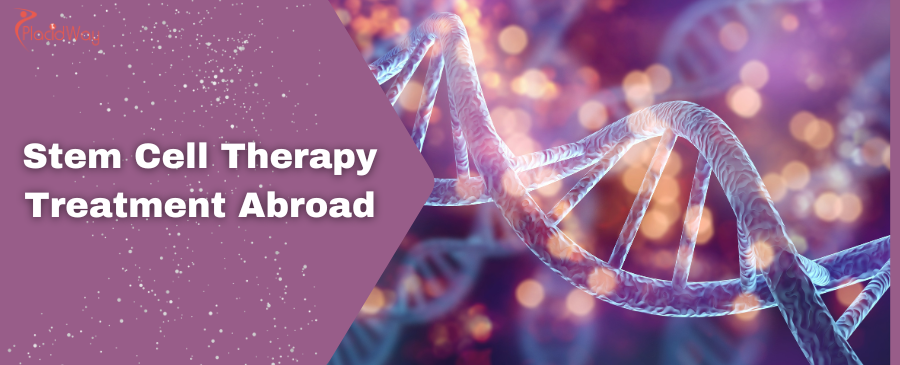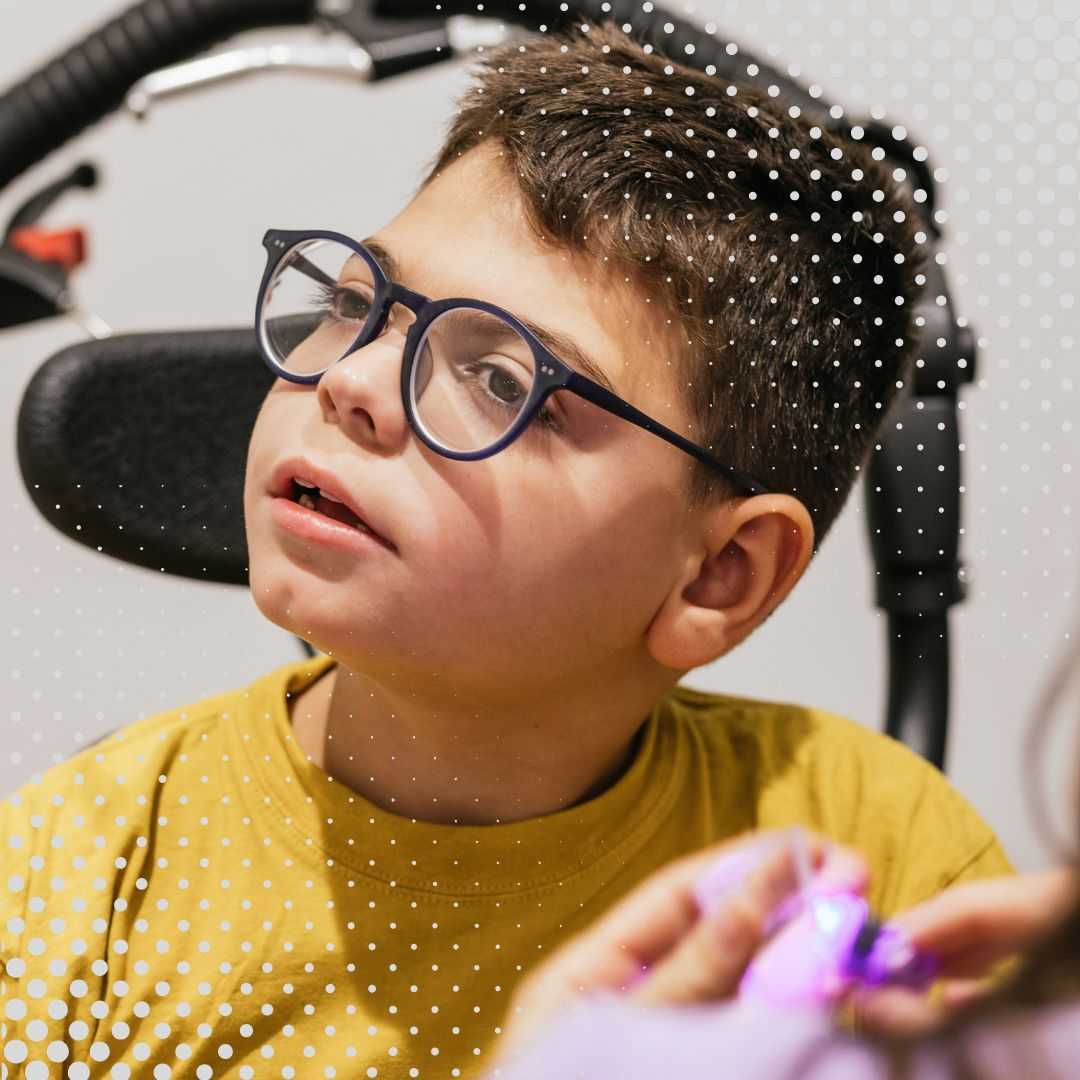
Stem Cell Therapy - Could This Be Your Path to Healing?
Have you been told that your health condition has limited treatment options? Are you living with chronic pain, an autoimmune disorder, or the effects of a degenerative disease, hoping for a better solution? You're not alone. Every year, millions of people search for answers beyond conventional medicine. This is where the groundbreaking field of regenerative medicine, particularly stem cell therapy, offers a new horizon of hope.
Stem cell therapy is a revolutionary approach that harnesses your body's own healing power. Think of stem cells as "master cells"—they have the remarkable ability to develop into many different cell types, from muscle cells to brain cells. This allows them to repair, rebuild, and rejuvenate tissues in the body that have been damaged by injury, disease, or simply the aging process. It’s a move away from just managing symptoms and toward healing the body from within.
For many, however, access to these advanced treatments can be limited by high costs and strict regulations at home. This is why medical tourism has become a vital pathway for patients seeking stem cell therapy. By traveling abroad, you can access world-class clinics, innovative procedures, and expert medical teams at a fraction of the cost. This guide will walk you through everything you need to know about stem cell therapy and how you can safely pursue it overseas.
What Conditions Can Stem Cell Therapy Actually Treat?
The versatility of stem cells allows them to be used in a surprising number of medical fields. Because they can reduce inflammation, modulate the immune system, and regenerate damaged cells, their potential applications are vast. While research is ongoing, stem cell therapy has shown significant promise in providing relief and improving quality of life for patients with various conditions.
Some of the most common areas where stem cell therapy is currently being used include:
- Orthopedic and Musculoskeletal Injuries: This is one of the most popular uses. It's effective for treating osteoarthritis (especially in the knee, hip, and shoulder), tendonitis, ligament tears (like ACL tears), and chronic back pain. Instead of joint replacement surgery, stem cells can help regenerate cartilage and reduce pain.
- Autoimmune Diseases: For conditions like Multiple Sclerosis (MS), Rheumatoid Arthritis (RA), Crohn's disease, and Lupus, stem cells can help regulate the immune system, stopping it from attacking the body's own tissues and reducing inflammation.
- Neurodegenerative Disorders: While not a cure, stem cell therapy is used to slow disease progression and manage symptoms for patients with Parkinson's Disease, Alzheimer's, Amyotrophic Lateral Sclerosis (ALS), and spinal cord injuries.
- Anti-Aging and Aesthetics: Stem cells are used to rejuvenate the skin, improve hair growth, and enhance overall wellness by repairing cellular damage associated with aging.
- Other Conditions: Research and clinical applications also extend to post-stroke recovery, Chronic Obstructive Pulmonary Disease (COPD), diabetes-related complications, and erectile dysfunction.
What Are the Different Types of Stem Cell Therapy?
Understanding the source of the stem cells is key to understanding the therapy itself. The cells used are adult stem cells, which are safe and do not carry the ethical concerns of embryonic stem cells. The two primary types of stem cell therapy you will encounter are:
- Autologous Stem Cell Therapy: The prefix "auto" means "self." In this procedure, stem cells are harvested from your own body. The most common sources are your bone marrow or adipose (fat) tissue. A doctor will perform a simple procedure to extract the tissue, which is then processed in a lab to isolate and concentrate the stem cells. These activated cells are then injected back into the area of your body that needs treatment. The biggest advantage here is that there is virtually no risk of rejection or an allergic reaction because the cells are your own.
- Allogeneic Stem Cell Therapy: The prefix "allo" means "other." This therapy uses stem cells from a carefully screened donor. The most common and potent source for allogeneic therapy is umbilical cord tissue, which is collected ethically after a healthy birth. These cells are very young, vibrant, and have powerful regenerative capabilities. Before being used, they undergo extensive testing for diseases and genetic abnormalities to ensure they are safe. This method is often preferred for older patients or those with severe autoimmune conditions, as their own stem cells may be less effective.
The type of therapy recommended for you will be determined by a specialist after a thorough review of your medical history and current health status. Both methods are considered safe and have been successfully used in clinics around the world.
Am I a Good Candidate for Stem Cell Therapy?
Stem cell therapy is a powerful tool, but it's not suitable for everyone. Reputable clinics will conduct a thorough screening process to determine if you are a good candidate. This ensures the treatment will be both safe and effective for your specific needs. Generally, a good candidate fits the following profile:
- Clear Diagnosis: You have a confirmed medical diagnosis for a condition that stem cell therapy can potentially help.
- Limited Success with Traditional Treatments: You may have tried conventional options like medication, physical therapy, or even surgery without achieving the desired results. Stem cell therapy is often considered when other treatments have failed.
- Overall Good Health: Apart from the condition being treated, you should be in relatively good health. Active infections, cancer, or severe heart or lung conditions might disqualify you.
- Realistic Expectations: It is important to understand that stem cell therapy is not a "magic bullet." While many patients experience significant improvements, results can vary. The goal is often to manage symptoms, improve function, and enhance quality of life, which may not always mean a complete cure.
The first step is always a consultation. A doctor specializing in regenerative medicine will review your medical records, discuss your health goals, and determine if you are a suitable candidate before moving forward.
Is Stem Cell Therapy Safe? What Are the Risks?
Patient safety is the number one priority at any reputable medical facility. Stem cell therapy, when performed by qualified professionals in a sterile environment, has a very high safety profile. Since it is a minimally invasive procedure, it avoids the significant risks associated with major surgery.
The potential risks are low and generally include:
- Pain or Soreness: You might experience temporary pain, swelling, or bruising at the injection site, similar to any other shot. This typically resolves within a few days.
- Infection: As with any procedure that breaks the skin, there is a very small risk of infection. Clinics prevent this by adhering to strict sterile protocols.
- No Improvement: There is a possibility that the treatment may not work for you. While many patients benefit, the body's response can vary.
When using autologous (your own) cells, the risk of rejection is eliminated. If using allogeneic (donor) cells, they are sourced from reputable tissue banks that perform rigorous screening for communicable diseases. The mesenchymal stem cells (MSCs) typically used also have low immunogenicity, meaning they are unlikely to cause an immune reaction.
Why Do People Travel Abroad for Stem Cell Therapy?
The decision to travel for medical care, known as medical tourism, is becoming increasingly common for patients seeking stem cell therapy. There are three main reasons why patients choose to go abroad:
- Cost Savings: This is often the biggest factor. In countries like the United States, a single stem cell treatment can cost tens of thousands of dollars. In popular medical tourism destinations, the exact same high-quality treatment can be 50-70% cheaper. This makes it accessible to a much wider range of people.
- Access to Advanced Treatments: Some countries have more progressive regulatory environments for regenerative medicine. This means that clinics abroad may offer more advanced types of stem cell therapies or use higher cell counts that are not yet approved by regulatory bodies like the FDA in the United States.
- Shorter Waiting Times: In countries with public healthcare systems, the waitlist for specialized procedures can be months or even years long. Medical tourism allows patients to schedule their treatment almost immediately, allowing them to get the care they need without delay.
Which Countries Are Best for Stem Cell Therapy?
When choosing a destination, it’s important to look for countries with a strong reputation for medical excellence. Some of the leading countries for stem cell therapy include:
- Mexico: Its proximity to the United States makes it a popular choice for North Americans. Cities like Cancun and Tijuana have state-of-the-art clinics with highly experienced doctors.
- Germany: Known for its high medical standards and precision, Germany is a leader in orthopedic stem cell treatments and has a long history of medical innovation.
- Colombia: A rising star in medical tourism, Colombia offers excellent healthcare facilities, particularly in cities like Medellin, at very competitive prices.
- Thailand: A hub for medical tourism in Asia, Thailand is famous for its world-class hospitals, exceptional patient care, and affordable treatment packages.
- Panama: Home to some of the most well-known research institutes and clinics, Panama is a top destination, particularly for allogeneic stem cell therapies.
How Much Does Stem Cell Therapy Cost Around the World?
Cost is a major consideration, and the price differences can be striking. The final cost depends on the type of stem cells used, the number of cells, the method of administration, and the number of treatment sessions required. Below is a table providing a general cost comparison for a common procedure, such as stem cell therapy for knee osteoarthritis.
| Country | Estimated Cost (USD) |
|---|---|
| United States | $8,000 - $25,000+ |
| Germany | $7,000 - $18,000 |
| Mexico | $5,000 - $15,000 |
| Colombia | $5,000 - $12,000 |
| Thailand | $6,000 - $16,000 |
*These prices are estimates and can vary based on the specific clinic and patient needs.
How Do I Choose a Reputable Stem Cell Clinic Abroad?
Vetting a clinic is the most important step in your medical tourism journey. A little research goes a long way in ensuring you receive safe, high-quality care. Look for the following:
- Doctor Credentials: Research the doctors and medical staff. Are they specialists in regenerative medicine? Where did they train? How many years of experience do they have?
- Accreditation: Look for clinics that are internationally accredited or certified by their national health ministry.
- Transparency: The clinic should be open and honest about the type of stem cells they use, where they come from, and the exact procedures they follow.
- Patient Reviews: Look for testimonials or reviews from previous patients. This can provide valuable insight into the patient experience and results.
- Communication: Does the clinic have staff who speak your language? Do they respond to your questions promptly and thoroughly? Good communication is a sign of good patient care. Working with a medical tourism facilitator like PlacidWay can help you connect with pre-vetted, high-quality clinics.
What's the Process for Getting Stem Cell Therapy Overseas?
The process is more straightforward than you might think. It typically follows these steps:
- Initial Inquiry & Consultation: You'll start by contacting the clinic or a facilitator. This is followed by a free online consultation with a medical specialist who will review your case.
- Medical Record Review: You will be asked to submit your medical records (like MRIs, X-rays, or blood tests) for a comprehensive evaluation.
- Treatment Plan & Quote: If you are deemed a good candidate, the clinic will provide a detailed treatment plan along with a transparent price quote.
- Travel Arrangements: Once you agree to the plan, you can book your travel. Many clinics offer assistance with airport transfers and accommodation suggestions.
- Treatment: You will arrive at the clinic for your scheduled procedure. The treatment itself is often quick, sometimes taking only a few hours.
- Recovery & Follow-up: After a short recovery period at the clinic, you will be given post-treatment instructions. Reputable clinics will schedule follow-up calls to monitor your progress once you return home.
What is the Recovery Like After Stem Cell Therapy?
One of the major appeals of stem cell therapy is the minimal downtime. Unlike major surgery, which can require weeks or months of recovery, most stem cell procedures are simple injections. Patients can typically walk out of the clinic shortly after the treatment is finished.
You will be advised to take it easy for a few days—avoiding strenuous exercise or heavy lifting—to allow the cells to settle and begin their work. The regenerative process is gradual. While some patients report feeling better within a few weeks, the most significant improvements often occur between 3 to 6 months after the procedure as the tissues continue to repair and heal.
How Long Do the Effects of Stem Cell Therapy Last?
The longevity of the results depends on several factors, including the condition being treated, the severity of the damage, and the patient's lifestyle and overall health. For an orthopedic issue like a partially torn tendon, stem cell therapy can lead to a permanent repair. For chronic, degenerative conditions like osteoarthritis or MS, the goal is long-term management.
Many patients experience relief that lasts for years. The therapy doesn't just mask the pain; it helps to regenerate the damaged tissue. Maintaining a healthy lifestyle with proper diet and exercise can help prolong the benefits of the treatment. In some cases, a follow-up treatment may be recommended after a few years to maintain the positive results.
Does Insurance Cover Stem Cell Therapy Abroad?
This is a critical question for many patients. Unfortunately, most health insurance providers in countries like the U.S., Canada, and the U.K. do not currently cover stem cell therapy. They often classify it as "investigational," despite its widespread use and documented success in clinics globally.
However, this is precisely why medical tourism is such a game-changer. The substantial cost savings abroad make the treatment a feasible self-pay option for many patients who could not afford it at home. When you consider that the price overseas can be less than half of the domestic cost, paying out-of-pocket becomes a realistic financial plan for accessing this life-changing care.
Your Journey Starts Here
Ready to explore the future of healing? Your journey to recovery could be closer and more affordable than you think. Don't let pain or a chronic condition dictate your life any longer. Contact PlacidWay today for a free, no-obligation consultation and connect with our network of world-renowned, pre-vetted stem cell clinics. Let's build your personalized treatment plan together and take the first step towards a better, healthier you.





.jpg)
.jpg)
.jpg)
.jpg)

Share this listing